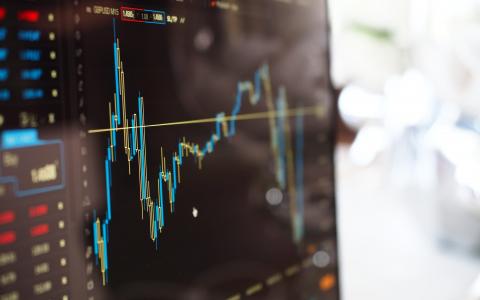
(Guru Focus) - Robert D. Arnott is a renowned investor and thought leader who focuses on strategies about valuation and quantitative investing. He is the founder and chairman of the Board of Research Affiliates, an asset management firm.
He is known to be one of the fathers of "fundamental indexing," i.e., constructing indexes based on value fundamentals such as the price-earnings ratio, price-book ratio, etc. His firm licences these indexes to many companies like PIMCO and Charles Schwab (SCHW, Financial), who then manufacture investment products like ETFs and mutual funds based on these indexes.
- Robert Arnott, a renowned thought leader and asset manager, thinks U.S. markets could see more carnage.
- He sees opportunities in emerging market stocks and bonds as well as value stocks in ex-U.S. developed markets.
- Arnott things inflation risk is being underpriced by the market and recommends inflation hedges like REITs and commodities.
In the summer of 2021, Arnott correctly identified the bubble in the growth stocks in the U.S. and the widening gap between growth and value stocks. He predicted that the gap would narrow, and it has done so. The following chart compares the performance of the Russell 1000 Growth ETF (IWF) to its value counterpart the Russell 1000 Value ETF (IWD). IWF peaked in November 2021 a couple of months before the market entered the current downturn.

In recent interviews with BNN Bloomberg and Consuelo Mack on YouTube, he opined that U.S. stocks are still "not cheap" even with the 24% decline from the peak. Arnott observed that the markets were coming down from a peak Shiller price-earnings ratio of 38.6, which is the second highest ever (after the peak Shiller price-earnings ratio of 44 reached at the peak of the dot-com bubble in 1999). Thus, he thinks there is risk of more carnage in the U.S. stock market.
GuruFocus maintains a page dedicated to Shiller PE. The current Shiller PE reading is as follows as of the close of trading on Friday, Sept. 30:
Shiller PE: 27.1 (-1.51%)
Shiller PE is 4.3% higher than the recent 20-year average of 25.9
Implied future annual return: 5.1%
Recent 20-year low*: 13.3
Recent 20-year high*: 38.6
S&P 500: 3585.62
Regular PE: 18.1 (Recent 20-year average*: 24.7)
The following chart shows the S&P 500 and the Shiller PE over the last 40 years. In spite of the recent drawdown of about 24%, the U.S. market still looks quite expensive on a historical basis.
However, Arnott thought that markets outside the U.S. are now cheap. He particularly likes emerging markets. He particularly liked emerging market value stocks and bonds. He said apart from emerging market stocks, emerging market sovereign bonds are also being priced like junk bonds and he thought the former were much safer than the latter. While he acknowledged the crisis in Ukraine and the worldwide supply chain disruptions, he said this should not have a big effect on most emerging markets. He said he failed to understand why the Russia-Ukraine war should affect stock and bond prices in Indonesia or Chile.
As for the nuclear Russian Roulette being played by Vladamir Putin, he acknowledged the risk was real but he suggested that investors ignore it, as there is no way to hedge that kind of risk. He instead suggested investors focus about "what, if the risk does not materialize." He think investors should buy "peak fear" like in March 2020 or March 2009. Investments made during those periods of peak fear turned out to be very profitable.
The following chart from Yardeni.com shows forward price-earnings ratios for selected stock markets.

In his BNN Bloomberg interview, Arnott recommended investors put some money to work in emerging markets and developed markets outside the U.S.
In the Consuelo Mack interview, Arnott thought that high inflation typically takes much longer to come down than what the market is currently pricing. He said his research into the subject tells him that after periods of high inflation, countries takes six to 12 years to bring inflation down to the long-term desirable inflation rate (i.e. about 2%). He thought the market is currently very sanguine about long-term inflation risk as shown by the breakeven rates in the U.S.
The market inflation expectations based on breakeven 10-year inflation rates are very low and the market is likely to be unpleasantly surprised. The breakeven inflation rate represents a measure of expected inflation derived from 10-Year Treasury Constant Maturity Securities and 10-Year Treasury Inflation-Indexed Constant Maturity Securities. The latest value implies what market participants expect inflation to be in the next 10 years, on average.
When asked by Mack about the one investment Arnott would recommend which every investor should own in a diversified portfolio, he answered that investors should think about buying some inflation hedges. He recommended emerging market stocks and bonds as outlined above as well as REITs and commodities.
By Praveen Chawla
October 3, 2022





